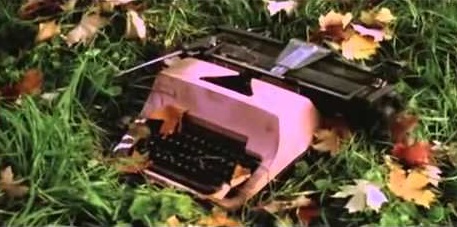It had been a long, agonising 10 weeks. Yesterday we were finally able to go to a movie theatre and see Wes Anderson’s latest quirky offering, The French Dispatch of the Liberty, Kansas Evening Sun. It is tout simplement magnifique, as they might say in Ennui-sur-Blasé, which, as it turns out, is anything but bore-dering on the jaded. After all, it's “the Paris of Jacques Tati” (actually, it's Angoulême) and the opening scene is a homage to the one in Tati's Mon Oncle, one of my all-time favourite films. Any movie featuring so many machines à écrire is going to be absolutely brilliant anyway. What's more, given it is Anderson’s “love letter to journalists”, it was a top-of-the-wozza must-see.
Ten weeks ago we were alerted to the existence of this new Anderson film, which had been released in the United States on October 22. A friend had picked up and dropped off one of those wonderful mock 20-page copies of The French Dispatch magazine, illustrated by Spanish artist Javi Aznarez, in this case 149 ᵉ Série, N° 12, at “200 Old Francs”. Our friend found it at a cinema complex and, like us a subscriber to The New Yorker, she recognised the cover style straight away. Seeing a typewriter advert on the back cover, Penny knew it would be of great interest in this household. She wasn't wrong. Our sense of anticipation thus heightened to the max, we waited impatiently for a chance to see The French Dispatch of the Liberty, Kansas Evening Sun. And yesterday it came. Well worth the wait!
Anjelica Huston’s
voiceover at the beginning of the film explains that the publisher-editor of The
French Dispatch, Arthur Howitzer Jr (played by Bill Murray) had, in his
youth, convinced his father (proprietor of the Liberty Kansas Evening Sun)
to finance a series of travelogue columns from France to be published in the “Sunday
Picnic” section of the Kansas newspaper. As soon as I heard Huston’s words, I recognised them as essentially A.J. Liebling’s story. In 1926, Liebling's father,
wealthy New York furrier Joe Liebling, asked his son if he would like to
suspend his budding career as a journalist to study in Paris for a year.
Liebling, fearing his father might change his mind, concocted a yarn that he
was thinking of marrying a woman 10 years his senior, a woman “being kept by a
cotton broker from Memphis, Tennessee”. Joe senior promptly sent a letter of
credit for $2000 and a reservation on the Caronia. Joe Jr sailed to
Europe and studied French medieval literature at the Sorbonne in Paris, all the
while absorbing French life and food. The experience inspired a lifelong love
for France and the French.
In An Editor’s Burial (Howitzer dies at both the beginning and end of the movie) - Journals and Journalism From The New Yorker and Other Magazines: Inspirations for The French Dispatch, an American Empirical Picture by Wes Anderson edited by David Brendel and published by Pushkin Press, Anderson tells The New Yorker’s articles editor Susan Morrison “Originally, we were calling the editor character Liebling, not Howitzer, because the face I always pictured was A.J. Liebling’s. We tried to make Bill Murray sort of look like him, I think. Remember, he says he tricked his father into paying for his early sojourn in Paris by telling him he was thinking of marrying a good woman who was 10 years older than he, although ‘Mother might think she is a bit fast’ … ” The Anderson-Morrison interview appeared in The New Yorker last September 5, under the headline, "How Wes Anderson Turned The New Yorker into The French Dispatch".
The most discordant part of the movie, from the point of view of typewriter use (and there’s a lot of it), involves poor old (looking) Frances McDormand as Lucinda Krementz, a journalist profiling the French student revolutionaries of 1968 (in real life Mavis Gallant). The machine the props people have given Frances to use to type in bed (with Timothée Chalamet as Zeffirelli, a student revolutionary) is one of those awful plastic versions of the Hermes Baby, for goodness sake! I’ve never tried to type on one of the plastic models while sitting up in bed, but the sound of a plastic portable typewriter is, in itself, sufficiently grating to put one off the idea. (Frances is later seen typing her report on a red plastic Hermes Baby.)
































3 comments:
Thanks for the background! I enjoyed the film and this adds to my appreciation.
Thank you! Much appreciated and have forwarded it to many.
My wife and I enjoyed the movie very much! I was stopping and rewinding many times to see the typewriters. Your article adds a lot to the movie. I bought the scenario as soon as it came out.
Daniel Burgoyne
Post a Comment